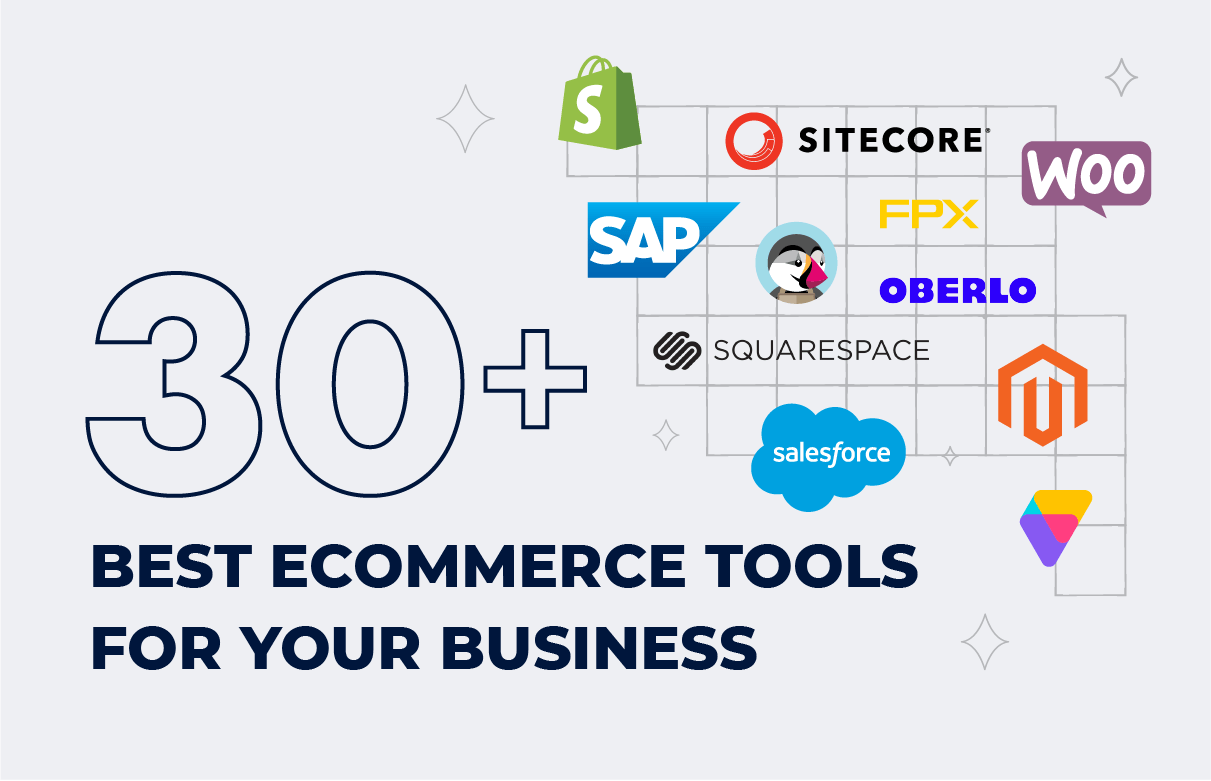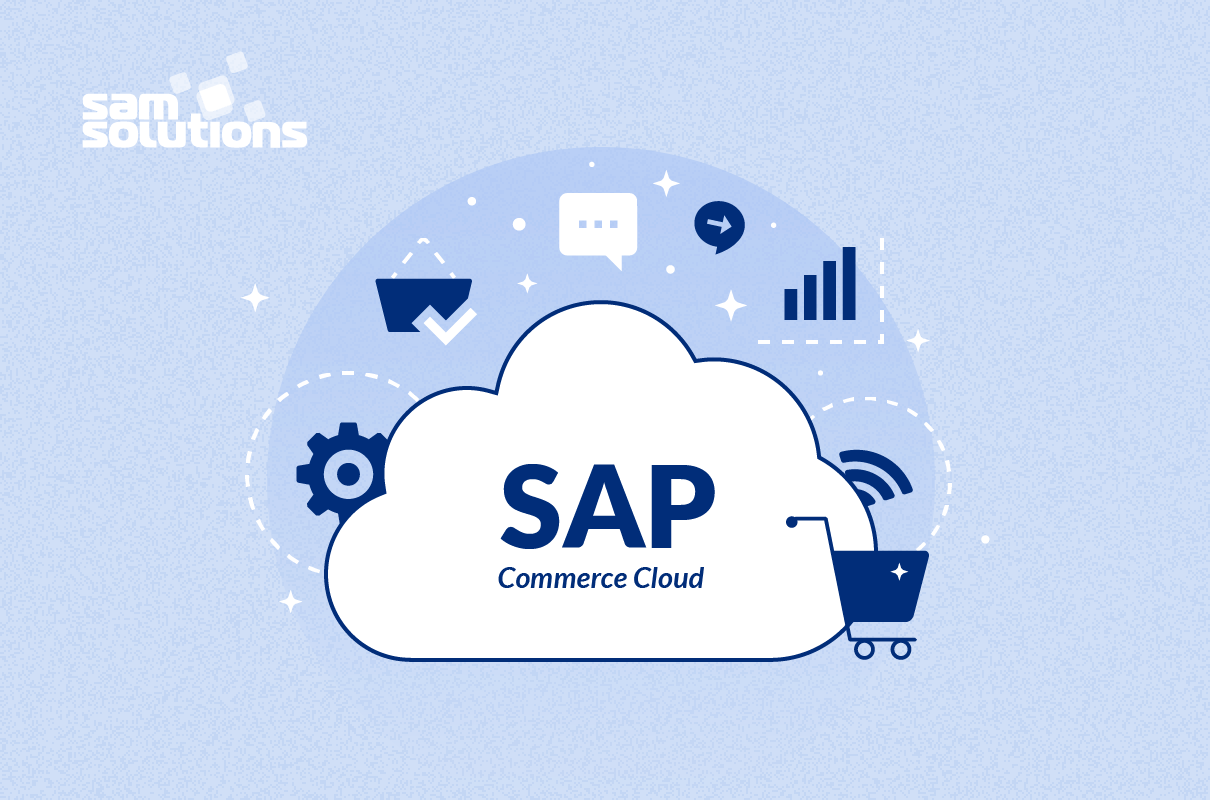The eCommerce software market is dominated by versatile platforms offering lots of customization options and industry-specific modules. However, these commerce platforms are no longer sufficient for businesses to keep up with evolving consumer expectations and respond to rapid changes in the industry.
Composable commerce, an innovative approach to continuously optimizing customer interactions, seems to be the solution to modern trading challenges. But is it just a buzzword, or does it have a promising future? Let’s find out.
Composable Commerce Definition
Despite the abundance of complex eCommerce solutions available, no single vendor can offer an impeccable platform for all intents and purposes. Today’s business environments and customer demands are changing too fast. That’s why at some point your company may encounter a situation where existing tools fail to meet your business requirements. Resolving these issues through integrations, migrations, and other means can be both time-consuming and costly.
SaM Solutions offers a wide range of platform-based and from-scratch ecommerce development services that help you reach your digital sales objectives.
Composable commerce, a dynamic concept that has been shaping the eCommerce landscape since 2020, has proven to be a catalyst for enhanced business agility.
- According to Gartner’s research, companies with implemented composable solutions are enjoying an impressive 80% faster pace in adopting new features compared to their competitors.
- Elastic Path’s 2023 study revealed that a substantial 72% of US retailers have already embraced composable commerce, and the trend is poised for even greater acceleration in 2024.
The essence of composable commerce is to empower organizations to respond swiftly and effortlessly to shifting business requirements and customer expectations, without being limited by rigid and monolithic eCommerce systems. To achieve this, companies can choose best-of-breed components from different software providers and combine them into unique applications that will meet their specific needs. Later on, they can recombine such apps by adding new components, removing unnecessary ones, or replacing the existing features with more advanced options.
This way, merchants get a new type of digital commerce platform where they tailor its functionality to fit their business needs, rather than adjust their established processes to align with the limitations of a single, integrated system.
For example, when your business achieves a certain level, you can take it up a notch by replacing a traditional search functionality with an AI-based solution. This way, you can create highly personalized commerce experiences for your customers.
How Does MACH Relate to Composable Commerce?
The acronym MACH refers to a tech architecture that forms the basis of composable commerce. This approach emphasizes building and deploying software that is highly adaptable, scalable, and efficient in operation. MACH incorporates four terms:
1. Microservices
The MACH architecture utilizes microservices as building blocks. Microservices are small components that work together to create a comprehensive application, yet remain autonomous in nature. Due to this, companies are empowered to develop and deploy software systems faster, and their maintenance is simplified.
Packaged Business Capabilities (PBCs) are a part of the MACH architecture. A PBC consists of several pre-built and pre-integrated microservices, operates as a single entity, and provides a specific set of functionalities. A shopping cart can be an example of PBC as it includes microservices for the catalog, payment processing, and checkout functions.
2. API-first
MACH architecture is API-first, meaning that all services and functions are accessed through APIs (Application Programming Interfaces). This allows for seamless integration with other systems and makes it possible to build custom solutions by combining different components.
3. Cloud-Native
MACH architecture is designed to run natively in the cloud, which provides many benefits such as scalability, cost-effectiveness, and high availability.
4. Headless
MACH architecture is headless, meaning that the frontend and backend are decoupled, allowing for more flexibility and control over the customer experience.
Composable Commerce vs. Headless
Composable commerce and headless commerce are two approaches to building and managing digital experiences. Although there is some overlap between the two, there are also some key differences.
- Architecture. The headless approach represents a platform with decoupled architecture, where the frontend layer and the backend functionality are separated and interact through APIs. Composable commerce, based on modular architecture, utilizes MACH technology and an open ecosystem to create custom solutions for businesses rather than rely on a one-size-fits-all approach.
- Complexity. Headless commerce can be more complex to implement and maintain, as it requires a deeper understanding of APIs, decoupled architecture, and the interactions between frontend and backend components. Composable commerce, being more integrated and streamlined, is easier to implement and maintain.
- Reusability. Headless commerce offers the ability to reuse the same frontend components on various platforms. Composable commerce allows companies to reuse any components from different software providers to develop unique applications.
- Speed. Composable commerce ensures faster implementation and launch of new digital experiences thanks to its modular architecture.
Thus, headless commerce is just one aspect of a holistic composable commerce approach.
Key Benefits of Composable Commerce
As a breakthrough approach to assembling and managing digital experiences, composable commerce provides three major benefits to merchants.
No Vendor Lock-in
At the core of composable commerce is the open ecosystem, which means that companies are no longer dependent on a single provider. They are free to choose whatever they need without compromising price or functionality. Such a digital platform has a large and growing ecosystem of partners and technology vendors, providing businesses with a wide range of tools and services to select from.
Flexible Solutions
Open APIs, plug-and-play components, and customization options enable businesses to create, modify, and update commerce experiences on the fly, without the need for extensive IT resources. Due to this flexibility, companies can quickly respond to new business opportunities or market changes and not be bogged down by complicated processes and systems.
Faster Time to Market
Integrating existing components and microservices on the go reduces time to market for fresh ideas and concepts. Businesses can also rapidly test and iterate on new commerce experiences after rolling them out, which helps to base all changes on real, customer-generated data.
Challenges
- Integration. Integrating multiple systems and tools can be complicated and time-consuming. This can also lead to compatibility and data synchronization issues.
- Data management. Handling large amounts of data from various sources and ensuring data security can be a challenge.
- Customization. While the new approach allows for a high degree of customization, this can also be a challenge. Customizing different systems and tools to work together seamlessly requires an advanced level of technical expertise.
- Maintenance. Maintaining and updating multiple tools within a system can be problematic.
- Cost. Implementing and maintaining a composable solution can be expensive due to the need for specialized tools and expertise.
Despite these challenges, many organizations still strive to adopt composable commerce due to the benefits it offers.
Composable Commerce with SaM Solutions
SaM Solutions is a reputable software provider with a proven track record of delivering high-quality, scalable, and secure commerce solutions. We have over ten years of Sitecore development expertise and a team of certified professionals (including a three-time Sitecore MVP) with a deep understanding of the platform’s capabilities.
Sitecore is at the forefront of composable commerce, and SaM Solutions’ developers also stay up-to-date with the latest technology advancements. Get in touch and try the composable commerce approach with SaM Solutions.



















 The Latest 15 Information Technology Trends in 2024
The Latest 15 Information Technology Trends in 2024 Top 10 Embedded Software Development Tools
Top 10 Embedded Software Development Tools IaaS vs. PaaS vs. SaaS: What’s the Difference?
IaaS vs. PaaS vs. SaaS: What’s the Difference? 10 Examples of Predictive Analytics
10 Examples of Predictive Analytics







![What Is Ecommerce Customer Service? [Including 8 Best Practices]](https://www.sam-solutions.com/blog/wp-content/uploads/Customer-Service-in-eCommerce.png)




 Web App Development Cost in 2025 [Key Price Factors]
Web App Development Cost in 2025 [Key Price Factors] 13 Best React Development Tools in 2025
13 Best React Development Tools in 2025 Top 10 Mobile App Development Trends 2025
Top 10 Mobile App Development Trends 2025 Top IoT Industry Trends in 2025
Top IoT Industry Trends in 2025 Java Web App Security: Everything You Need to Know
Java Web App Security: Everything You Need to Know
Composable commerce has the potential to completely disrupt the e-commerce industry. It’s exciting to think about the endless possibilities for customization and innovation that it opens up.
I love that composable commerce puts the power in the hands of the merchants. They’re no longer limited by pre-made templates or strict rules. It’s truly a revolutionary approach.
As a merchant, the idea of being able to easily build and manage my online store through composable commerce is incredibly appealing. This seems like it could save so much time and effort compared to traditional methods.
This is a great post! I especially appreciate the explanation of how composable commerce differs from headless e-commerce solutions. It’s clear that this approach has a lot of potential.
Composable commerce is truly a game changer for e-commerce! The flexibility and customization it offers is unmatched. Can’t wait to see how it evolves in the future.